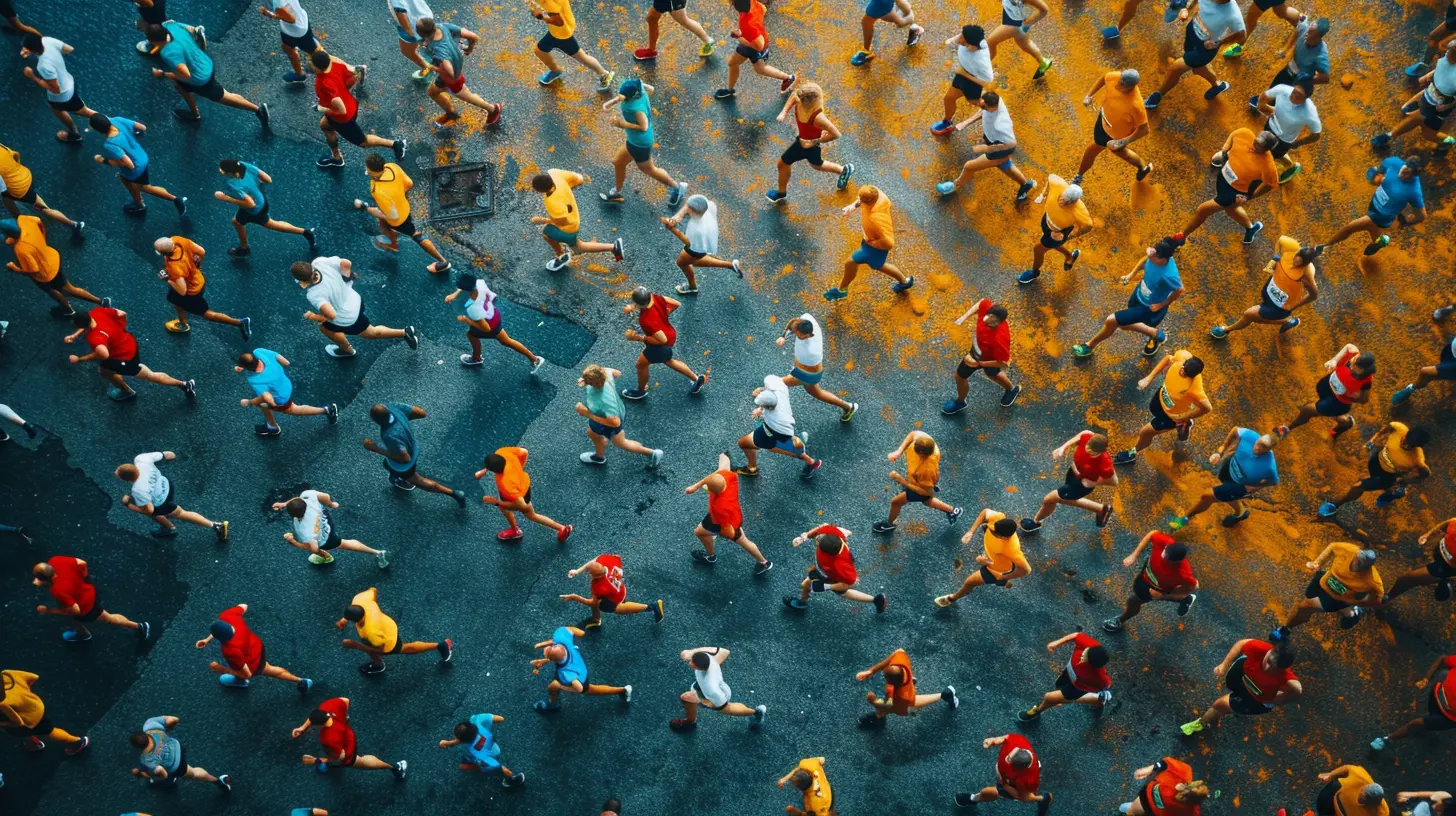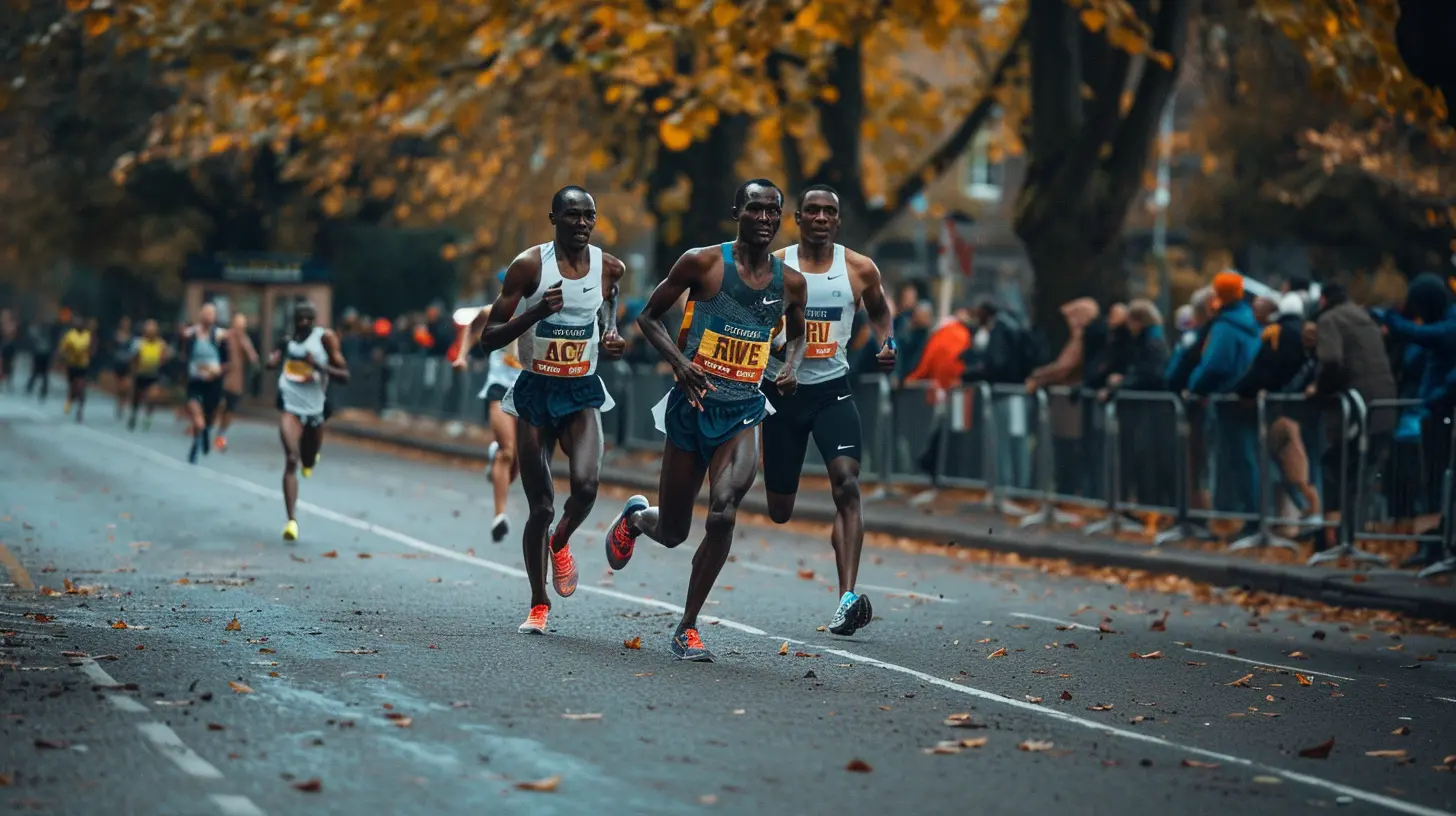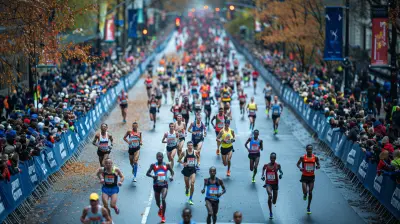22 March 2025
Running a marathon isn’t just about lacing up your shoes and hitting the pavement. It’s a complex challenge that pushes your body to its absolute limits. But what exactly is happening inside you when you're out there pounding the pavement for 26.2 miles? Whether you're a seasoned marathoner or just thinking about signing up for your first race, understanding the science behind marathon running can give you a serious edge. From muscle fatigue to hydration and energy expenditure, every aspect of your body is working overtime during a marathon. Let’s dive into the fascinating world of the human body during marathon running.

The Physiology of Marathon Running
Energy Systems: Fueling Your Run
When you’re running a marathon, your body runs primarily on energy stored in the form of glycogen, which is essentially glucose stored in your muscles and liver. It's like the fuel in your car’s gas tank. But here’s the kicker—your body can only store so much glycogen, and once you burn through it, you hit what runners dread: "the wall."Marathon running is an endurance challenge that requires your body to balance between two energy systems: aerobic (with oxygen) and anaerobic (without oxygen). The majority of your marathon will be powered by your aerobic system, which relies on oxygen to break down carbohydrates and fats for energy. This is a slow but sustainable form of energy production, perfect for long-distance running.
However, when you’re pushing hard or sprinting at the finish line, your body taps into its anaerobic system. This system doesn’t rely on oxygen and provides energy quickly but is much less efficient and can lead to quicker exhaustion because it produces lactic acid, which builds up in your muscles.
Hitting "The Wall"—What’s Really Happening?
Most marathon runners are familiar with "the wall." It usually happens around mile 20, when fatigue sets in, and your legs feel like lead. But what’s really going on inside your body?As mentioned earlier, your body stores glycogen for energy, but it can only store enough to get you through about 20 miles of running. When those glycogen stores run out, your body has to switch to burning fat for energy. While fats provide a rich source of energy, they are less efficient and take longer to convert into usable fuel. This shift in energy sources is what makes you feel sluggish, disoriented, and heavy. The key to avoiding the wall? Proper pacing and fueling during the race!

Muscles and Fatigue: The Battle Within
Muscle Fiber Types: Fast vs. Slow
Believe it or not, not all your muscles are created equal. You have two primary types of muscle fibers: slow-twitch and fast-twitch.- Slow-twitch fibers are your endurance muscles. They are built for long, steady activities like marathon running. These fibers use oxygen efficiently and can keep working for long periods without getting tired.
- Fast-twitch fibers, on the other hand, are built for explosive movements like sprinting. They provide quick bursts of energy but fatigue much faster.
During a marathon, your slow-twitch fibers are the stars of the show, keeping you moving mile after mile. However, as those fibers begin to tire, your body may start recruiting fast-twitch fibers, especially if you're pushing your pace or running up hills. This is why proper training and gradual increases in mileage are crucial—you're conditioning those slow-twitch fibers to go the distance.
Muscle Damage and Recovery
Marathon running takes its toll on your muscles in more ways than one. The repeated impact of your feet hitting the pavement causes what’s called microtrauma—tiny tears in your muscle fibers. While this sounds bad, it’s actually a normal part of the muscle-building process. After your race, your body will repair these tears, and your muscles will come back stronger than before. However, this is also why rest and recovery are so important after a marathon. Trying to push through without giving your body time to heal can lead to injury.
Cardiovascular System: Heart and Lungs in Overdrive
Heart Rate and Blood Flow
Your heart is a powerhouse during a marathon. It has to pump a tremendous amount of blood to deliver oxygen and nutrients to your working muscles. As you run, your heart rate increases to keep up with the demand. The fitter you are, the more efficient your heart becomes at this task. That’s why elite marathoners often have lower resting heart rates—they’ve trained their hearts to pump more blood with fewer beats.During the race, your heart is working in overdrive to maintain sufficient blood flow. This is where pacing becomes critical. Running too fast too soon can spike your heart rate, leading to quicker fatigue. A well-paced marathon will keep your heart working efficiently throughout the race.
Oxygen Uptake: VO2 Max
Another key factor in marathon running is your VO2 max—essentially, the maximum amount of oxygen your body can use during exercise. The higher your VO2 max, the more oxygen your muscles can use, and the longer you can sustain your effort. Marathon training is designed to improve your VO2 max by gradually increasing your endurance and your body’s ability to use oxygen efficiently.
Hydration and Electrolytes: The Balancing Act
Sweat and Fluid Loss
Running a marathon is a sweaty business. The average runner can lose between 1-3 liters of sweat per hour, depending on conditions like heat and humidity. While sweating is essential for cooling your body down, it also leads to fluid loss. If you don’t replace those fluids, you risk dehydration, which can seriously impair your performance and even be dangerous.Electrolytes: Sodium, Potassium, and Magnesium
It’s not just water that you’re losing through sweat. You’re also shedding vital electrolytes—sodium, potassium, and magnesium—that help regulate muscle function, nerve impulses, and fluid balance. Without enough electrolytes, you can experience muscle cramps, dizziness, and even more serious conditions like hyponatremia (low sodium levels), which can be life-threatening.To avoid dehydration and electrolyte imbalances, it's crucial to hydrate properly before, during, and after the race. Sports drinks, gels, and electrolyte tablets can all help to keep your levels in check while you're on the go.
Mental Toughness: The Psychological Battle of Marathon Running
The Power of the Mind
You’ve probably heard that marathon running is as much a mental challenge as it is a physical one. That’s not just a cliché. The mental aspect of marathon running can make or break your race. As fatigue sets in, your mind starts to question whether you can keep going. This is where mental toughness comes into play.Having a race strategy, focusing on small goals (like the next mile marker), and using positive self-talk can help you push through the tough moments. Many runners also use visualization techniques, imagining themselves crossing the finish line, to stay motivated during the race.
Managing Stress and Anxiety
It’s normal to feel nervous before a marathon. After all, you’ve spent months preparing for this moment, and a lot is riding on your performance. However, too much stress can be counterproductive. High levels of anxiety can cause your muscles to tense up, leading to inefficiency and faster fatigue.To combat pre-race jitters, try incorporating relaxation techniques into your routine. Deep breathing, meditation, and even mental rehearsal of the race can help calm your nerves and get you into the right frame of mind.



![The Quiet Dominator: How [Player Name] Lets Their Game Do the Talking](/pictures/blog/small/the-quiet-dominator-how-player-name-lets-their-game-do-the-talking_2.webp)


Nixie Fletcher
What an inspiring read! 🏃♂️💨 The insights into marathon running and how our bodies adapt are truly fascinating. It’s amazing how science can help us reach new personal bests. Here’s to every runner conquering their goals—let's lace up and hit the pavement! 🎉🥇
March 31, 2025 at 11:35 AM